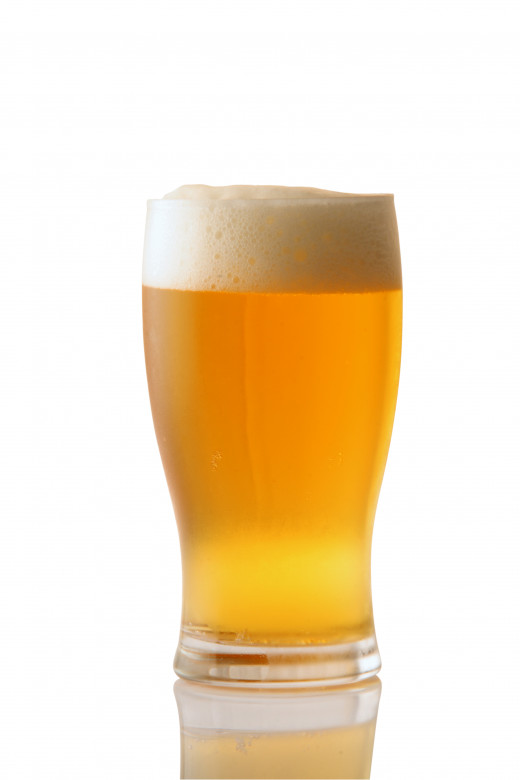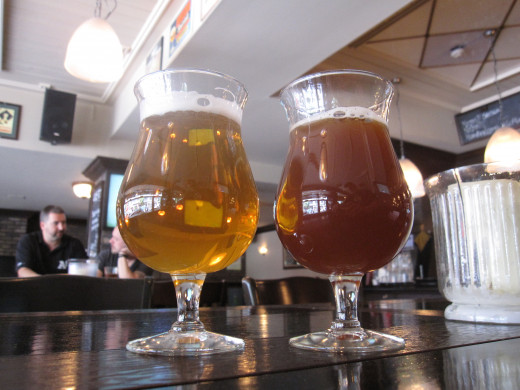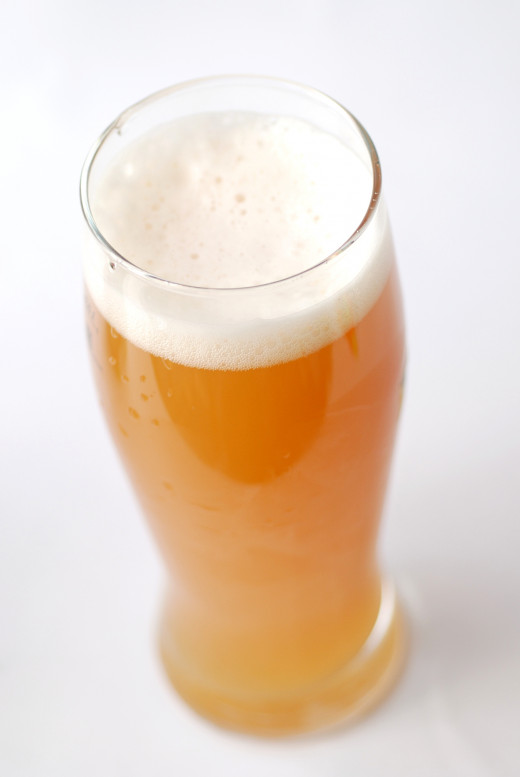Pale Ale Beer Style Guide - IPA, Double IPA, American, English, What Does it All Mean?

The Basics
The term pale ale has become very common as more and more beers claim the description or one of its derivatives. At this point in time, the simple "pale ale" descriptor can be so vague that it tells you very little about the beer you are about to consume, short of its color. There are now India Pale Ales (IPAs), Double IPAs, English Bitters of various strengths, as well as light colored beers from around Europe.
The first distinction to make is that pale ale doesn't refer to just any light-colored beer. The term pale ale, at least among English speakers, refers to a set of beers that come from English brewing tradition. Central Europe and Germany in particular have many light-colored beer styles that are not generally referred to as pale ales.
A very basic description that will apply to almost any pale ale is that it will be somewhat light in color with tints that range from light yellow to orange. Likewise, pale ales are distinguishable for their hoppy flavor. This means they will be more bitter than most other beer styles and will not have very prominent malt flavors to balance out the hop tastes. Most pale ales will be a rather intense for a beginning beer drinker due to the amount of bitterness--as palates become more accustomed to bitterness, beer drinkers are able to discern more subtle flavors from hops, so do not walk away from this beer style guide thinking that the main flavor of pale ales or hops in general is "bitter." This is not the case.
A Brief History of Pale Ales
Pale ales, in the English context, were first found in the 1700s and the term was applied to beers that were a bit lighter than the traditionally dark brews common at that time. The original pale ales would probably be described as brown or amber ales in the 21st century. "Pale" was certainly a relative term. As time went on, though, brewing techniques made it more possible to create lighter colored beers. The pale ale really did not take off in England, though. In India, however, it did. The pale ale tasted much better in the warm climate in India than the full-bodied winter beers popular in England. It's flavors and light, refreshing mouthfeel (this is what beer geeks say to refer to the way it feels in your mouth) are perfectly suited to the perpetual heat in India.
The next part of the story, if you haven't guessed, is the India Pale Ale (IPA). This, of course, refers to the variety of pale ale that gradually became different from its equivalent sold in England. The frequently told tale when it comes to the IPA is a partial truth. The trip to India took about six months, meaning foods could spoil on the long trip. The oils from hops as well as higher alcohol contents serve to preserve beer better; therefore, the IPA has more hops and more alcohol than most other beers. This is true, but the necessity of this is somewhat overstated. Records show that porters and darker beers from England were also consumed in India. Nonetheless, having a beer that was more immune to spoiling as the English had a tough time dealing with disease when they colonized India. The IPA was unlikely to spoil and since it was made in England, it would not come with the types of microbes that Indians were immune to but were killing English colonizers.
The pale ale and IPA became more popular in England as former colonizers returned to the mainland and wanted their old beer of choice. The style remained popular for years before gradually being displaced by another pale ale style, the "bitter." More on the bitter later.

Pale Ales in the 20th and 21st Centuries
Homebrewing became legal in 1978, leaving American homebrewers able to create alternatives to the mass-marketed brews available to them, primarily adjunct lagers. They picked up with old English beer recipes and the pale ale caught on quickly. The hops that grow in the United States are rather different from those that are native to England, and the pale ale was a perfect fit to show them off. As mentioned previously, pale ales have very relatively little malt flavor compared to hop flavor, so it is the perfect style to make the distinctive American hops stand out.
Since IPAs have even more hops than the pale ale, it is unsurprising that American brewers suddenly latched onto that style more than the milder, original pale ale recipes. In true American fashion, before long many brewers began leaving centuries old recipes in favor of adding even more hops to their IPAs, which leads to the Double or Imperial IPA styles. These are somewhat arbitrary style names, but they can be helpful when shopping for beer.

Filtered vs. Unfiltered - What's That?
Filtration is the process when yeast is removed from beer. Most beers today are filtered, as are most (but certainly not all) pale ales. Yeast is a key component to the brewing process and accounts for a large part of a beer's flavoring. A filtered beer means that the yeast was removed from the final product. This makes the body of the beer lighter, but requires something called "force carbonation," since the yeast is what gives the beer carbonation. A filtered beer will be pretty much transparent in appearance. An unfiltered beer will have the yeast remaining in the final product, which will give it a hazy appearance and a set of tastes particular to the strains of yeast used. Occasionally, you will see sediment at the bottom of the bottle of an unfiltered beer; if you are pouring out an unfiltered beer, do not pour out the last little bit to avoid dumping that sediment in somebody's glass.
IPAs, Double IPAs, Imperial IPAs
These are somewhat disputed terms. Double and Imperial can be considered more or less the same variety, though some individual breweries may believe there are particular distinctions between them. The terms are used to indicate that the Imperial/Double IPA uses more hops than "just" an IPA. These are useful to you as a consumer, because you'll know that the Imperial/Double IPAs will be more intense than most beers labeled simply IPA.
English vs. American Pale Ales
The key difference between the English and American versions of pale ales is the sourcing of the ingredients. Since the American homebrewers were using English recipes, the brewing process is not much different (though American brewers have done a fair amount of experimentation recently). American hop varieties, on the other hand, have a distinguishable taste difference from those grown in England.
English hops are generally described as earthy, fruity, or minty. These are not prominent flavors, so do not be put off if you get your hands on an English pale ale and don't find yourself saying, "oh, how fruity!" Furthermore, English hops are not especially bitter or flavorful in general compared to other hops. This does not mean that they are inferior by any means, though. More impactful or bitter flavors are not automatically better!
American hops, particularly those used by West Coast brewers, are particularly bitter and have citrusy, floral, and spicy flavors. These may best be detected by smell if you are somewhat new to drinking beers or highly hopped beers. When I said previously that the pale ale was good to showcase American hops, this is why. The style lets the extra bitter American hops show through, unimpeded.






